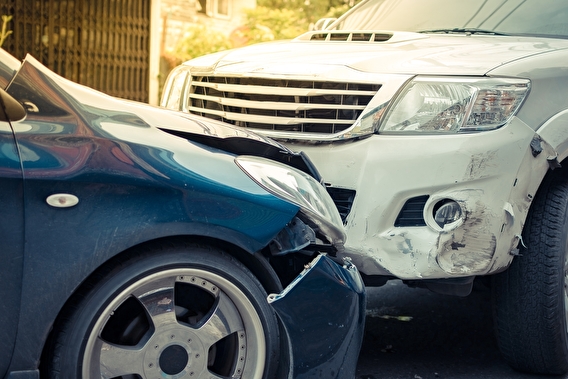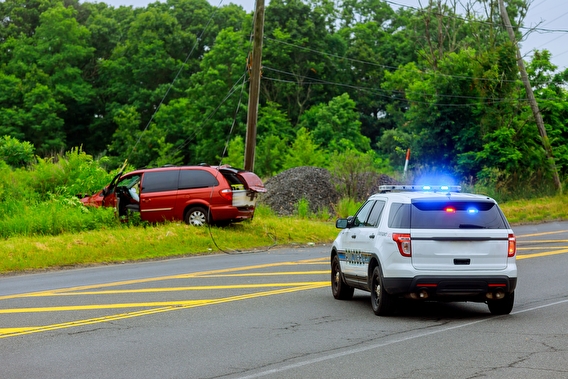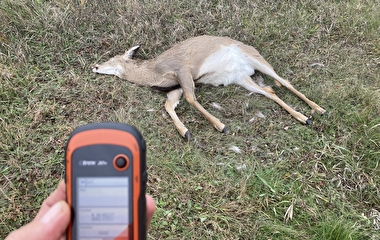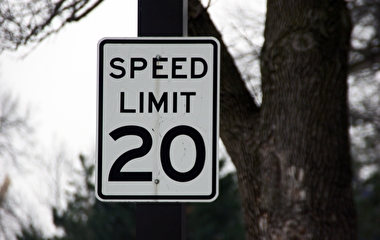
Nichole Morris, associate research professor at the University of Minnesota’s Department of Mechanical Engineering and director of the HumanFIRST Laboratory, presented her work on crash data in two breakout sessions at the statewide 2022 Toward Zero Deaths conference on October 12. The conference, which drew more than 800 traffic safety advocates from across Minnesota, is sponsored by the Minnesota state departments of health, public safety, and transportation and hosted by CTS.
In “Traffic Safety and Inequities: Understanding Safety Gaps,” Morris highlighted how inequitable access to safe and reliable transportation produces disparities in health outcomes among marginalized groups using examples in four areas.
Socioeconomic status: Tracking a 2016 commitment by 20 automakers to make automatic emergency braking standard on new vehicles by September 2022, Morris showed that most automakers have failed to meet this goal equitably. Although automakers such as Tesla and Mercedes-Benz were the first to add the safety-enhancing feature, more affordable models continue to lag luxury vehicles in making this life-saving equipment standard. This example, Morris says, underscores how automakers do not incorporate proven safety features to benefit all drivers but rather provide them at an inequitable premium.
Gender: Morris highlighted data showing that men are more likely to be involved in auto crashes—but when women are involved, they are more likely to be injured or killed. This is due in part to men—particularly younger men—being more likely to exhibit risky behavior behind the wheel such as speeding, running lights, and driving while impaired. Vehicle type also contributed to this disparity, as men are more likely to be driving large trucks and SUVs designed to prioritize safety of their occupants over all others. In addition, vehicle safety testing does not adequately incorporate data that accounts for differences in body types; one result is that women are 70 percent more likely to suffer serious leg injuries in a crash.
Race: Minority pedestrians generally show higher rates of mortality and hospitalization than White pedestrians following disparities in automobile ownership. Research that Morris summarized shows that minorities are more likely to depend on walking and public transportation and more likely to walk in areas with greater vehicle volumes and intersections inadequately designed for pedestrians. Disparities show up highest amongst Black and multiracial pedestrians, who are the most likely to be killed or hospitalized respectively following a crash.
Geography: Those living in rural areas are more likely than urban and suburban travelers to be seriously injured or to die in traffic crashes.
“When it comes to vehicles getting larger and larger, we have an arms race on our roadways,” Morris said. “We need to control this trend.” Among the remedies she proposed to level the transportation playing field and address disparities:
- Enforce a standard for all automobiles for automatic emergency braking.
- Limit vehicle size through tax incentives for smaller vehicles or penalties for larger ones.
- Invest more in safe public transportation and bicycling facilities.
- Add speed limiters to vehicles to ensure that drivers cannot exceed speed limits.
In another session, Morris discussed her work to help law enforcement assess the severity of traffic crash injuries.
Accurate injury severity data is vital for improving roadway safety since this data can inform how to best allocate resources. Yet identifying the degree of injury is often difficult for law enforcement officers on the scene of a crash. Officers have limited medical training, and the process of classifying injuries is complicated, Morris explained. Injuries may be under- or overestimated or misclassified because of the victim’s age or gender or the road environment, for example. All this makes for a process that may be inefficient and error prone.

Since tools and interventions that help decision making are common in the health care field and have been shown to improve reliability, Morris wondered if the same could help police officers. “What we want to be aiming for is consistency and reliability in the data,” Morris said. “And we want officers to feel supported, and that they’re not having to make a tough decision they’re not trained for.”
Approaching the work from a human factors perspective, Morris and her team consulted with officers and determined that an interactive body diagram would be the best option for a tool that reduced cognitive workload. Two prototypes were created to allow officers to click areas of a body diagram and select from a reduced list of injuries. Usability testing was conducted among rural and metro law enforcement and state patrol troopers.
The researchers next tested a revised prototype through an online survey with Minnesota law enforcement officers to test injury severity accuracy and confidence with the tool compared to using a standard information list. Results showed that when officers used either decision aid, it improved accuracy. The new tool was perceived as extremely easy to use and very helpful, Morris said, and may prove particularly useful in reporting certain levels of injury that are typically misreported.
The tool had some limitations, in that some testers found it wasn’t exhaustive enough or felt it was time consuming to use.
“Ultimately we know using tools like this can be very effective and will eventually improve roadway safety because we’ll be making more informed decisions,” Morris said. In addition, officers reported feeling more confident in their evaluations. “I recognize we’re asking them to do a little more, and we want to make it worth their time.”
Morris recommended that future work compare injury data before and after using the decision aid tool to validate research findings.
The work was funded by the Minnesota Department of Public Safety, with administrative support provided by the Minnesota Department of Transportation.


